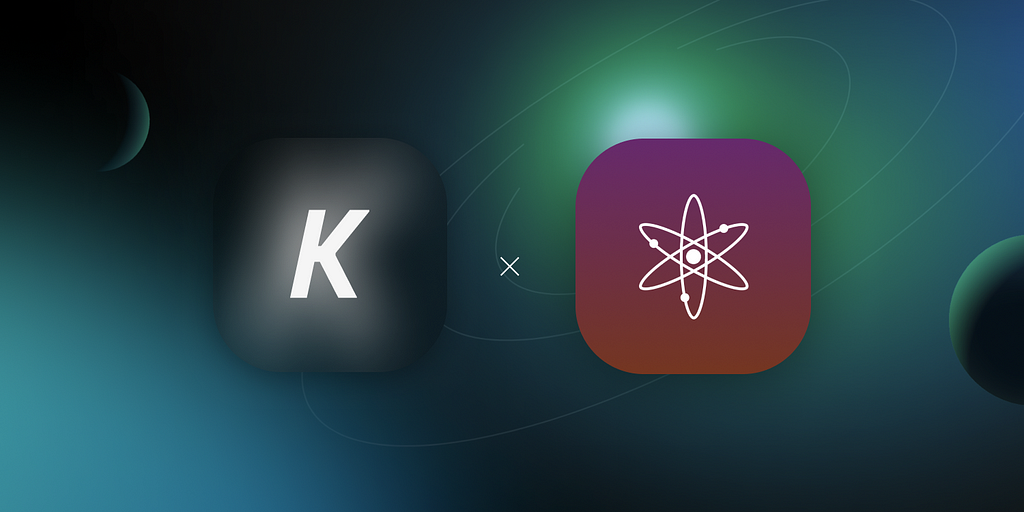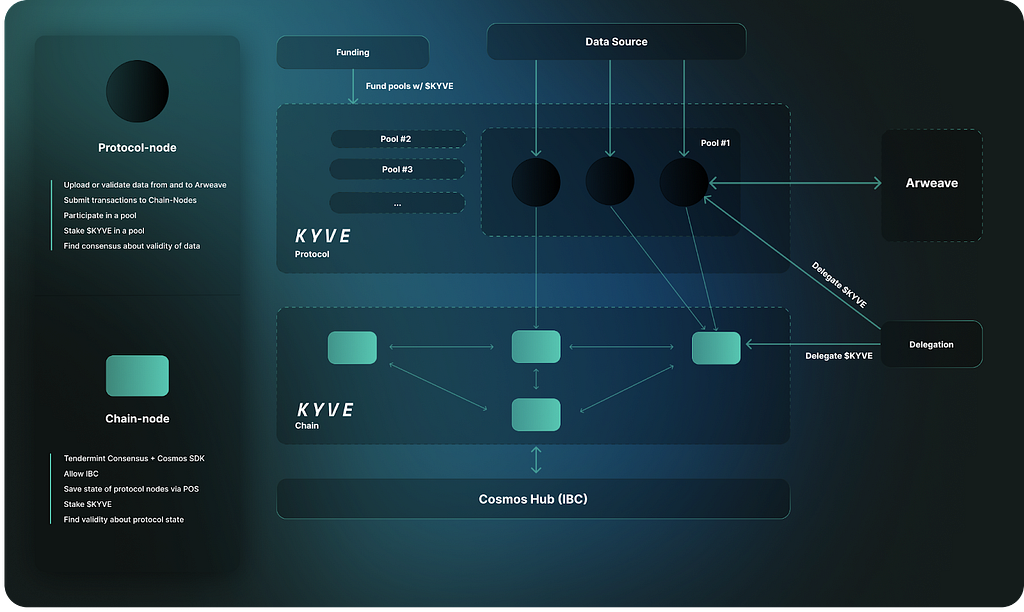Latest news about Bitcoin and all cryptocurrencies. Your daily crypto news habit.
KYVE, the Web3 Data Lake Solution, Turns to Cosmos to Launch Scalable and Streamlined Layer 1 Solution

A few years ago, Cosmos brought forward its own game-changing Standard Development Kit (SDK), providing Web3 builders with a new, modular framework allowing for quick and easy blockchain development.
Since then, hundreds of different blockchains have benefited from the SDK framework and quickly built projects with success and ease. Being one of the simplest, most secure, and most flexible app-building frameworks in the industry, Cosmos SDK was the natural choice for our team at KYVE.
As a result of facing limitations of scalability and flexibility with our previous EVM-based chain, our team evaluated multiple options to support the KYVE Web3 data lake solution and found that Cosmos provided all that we were looking for and more. More specifically, it provided us with a non-EVM, scalable solution that made it easier to handle high-frequency transactions, faster, more streamlined block times, and the KYVE Network’s very own block space.
With this in mind, KYVE is excited to announce that we recently joined the Cosmos Ecosystem and have migrated most of our blockchain protocol from an EVM-based chain to Cosmos SDK-based chain!
Before we dive into this new development, let’s take a step back and look at what exactly the KYVE Network does and why we needed this change.
A closer look at KYVE
KYVE is a Web3 data lake solution allowing projects to easily standardize, validate and permanently store data, such as raw block data, transactions, application-specific data, financial data, and more. Not only is the project important for RPC and node runners, but KYVE also allows anyone to have clearer insights about the on-chain data, aiding projects’ overall data scalability.
Our protocol does so thanks to its Layer 1 chain powered by decentralized archivers and validators taking blockchain data, validating and bringing it to a unified standard, then storing it permanently on Arweave for anyone to easily access, ensuring the scalability, immutability, and availability of data over time.
With the ever-growing amount of unorganized and unreliable data in today’s world, KYVE’s solution makes the process of storing and accessing important data more streamlined for growing projects.
Through the use of data pools and protocol nodes containing extendable logic, KYVE has already integrated its protocol into many established blockchains, including Bitcoin, Avalanche, Solana, and more, despite being on testnet. As our project grows more and more each day and is on track to launch mainnet later this year, we began to face major limitations with the original EVM solution, which required additional research into other infrastructure options.
The key issue being EVM is not scalable for applications with high transaction frequency like KYVE.
In times of high network usage, gas prices always increase. This is because all applications share the same block space on EVM. Only a certain number of transactions are allowed per block, so if one wants their transaction to be prioritized, they have to pay more gas for it.
In broad terms, users are willing to pay higher gas fees for transactions they consider “valuable.” For instance, a trade executed on Uniswap with a $10,000 USD profit is probably ok paying $100 in gas. For less “valuable” transactions such as Governance and Community votes on KYVE, however, fees this high are not economical.
Because of the volume of engagement, KYVE needed a solution that does not need to share block space with other applications. Many of the EVM solutions we were looking at were just not decentralized to the point we needed them to be. That is until we started looking into the Cosmos Ecosystem and the Cosmos SDK.
Venturing into the Cosmos
We made the decision to switch to a Cosmos SDK-based chain not only because it fits our scalability, transaction volume, and independent block space requirements, but also because the Cosmos application building toolkit makes it easy to scaffold chains, create blocks, carry out transactions and carry out governance. It enables KYVE to have faster, more streamlined block times and we no longer have to worry about sharing block space.
Typically, switching from one network to another is quite a Herculean task. However, switching to Cosmos was a smooth process! Taking our team less than a week to get the base chain up and running. How did we go about it?
We first initiated the process of switching with the Go programming language, which we found quite easy to implement. And with the aid of Ignite CLI, a platform used to build, launch and maintain crypto applications on a sovereign blockchain, we were able to scaffold a chain quickly, just needing to add our custom logic. Overall, the team was able to have a PoC chain up and running in just a few days, and it was quite simple to transfer the existing Solidity logic onto the chain.
We personally believe that transferring logic from Solidity to Cosmos SDK is the easiest way to get started in the ecosystem. This is because it involves very similar mentalities. Instead of having functions that your users interact with, they instead send transactions with different types and inputs. From our users’ perspectives, there isn’t a massive difference, other than faster speeds and lower costs.
“After carefully looking through many networks and app chain solutions, we found Cosmos (with the help of the Ignite CLI), to be the easiest to get started with,” said John Letey, co-founder of KYVE. “In less than a week, the tech team had ported most of our Solidity logic to a Cosmos SDK chain!”

KYVE’S architecture
Building Towards the Future of Web3 Data
KYVE’s migration to a Cosmos SDK-based chain has unlocked new potential for KYVE’s scalability and developments for the future of data management. It has also allowed our team to properly prepare its newly launched incentivized testnet, Mission Korellia, as well as gear up for our upcoming mainnet launch in Q3/4 of this year.
“Thanks to the switch to Cosmos, we are able to play out KYVE’s full potential. Worrying about scalability has now become one of the minor challenges in development,” said Fabian Riewe, co-founder of KYVE.
In the months to come, KYVE has exciting milestones to hit, and will also continue to bring on new partnerships and exciting blockchain integrations, spreading its data solution to support as many projects as possible. Be sure to join our community to stay up to date on all that is yet to come.
More about KYVE
KYVE’s network is powered by decentralized archivers and validators funded by $KYVE tokens and aims to operate as a DAO (Decentralized Autonomous Organization) in the near future.
This past year KYVE has gained major support, currently backed by top VCs, including Hypersphere Ventures, Coinbase Ventures, Mechanism Capital, CMS Holdings, and blockchains such as Arweave, Avalanche, Solana, Interchain, and NEAR.
KYVE can be found on Twitter, Discord, and Telegram.
KYVE, the Web3 Data Lake Solution, Turns to Cosmos to Launch Scalable and Streamlined Layer 1… was originally published in Cosmos Blog on Medium, where people are continuing the conversation by highlighting and responding to this story.
Disclaimer
The views and opinions expressed in this article are solely those of the authors and do not reflect the views of Bitcoin Insider. Every investment and trading move involves risk - this is especially true for cryptocurrencies given their volatility. We strongly advise our readers to conduct their own research when making a decision.